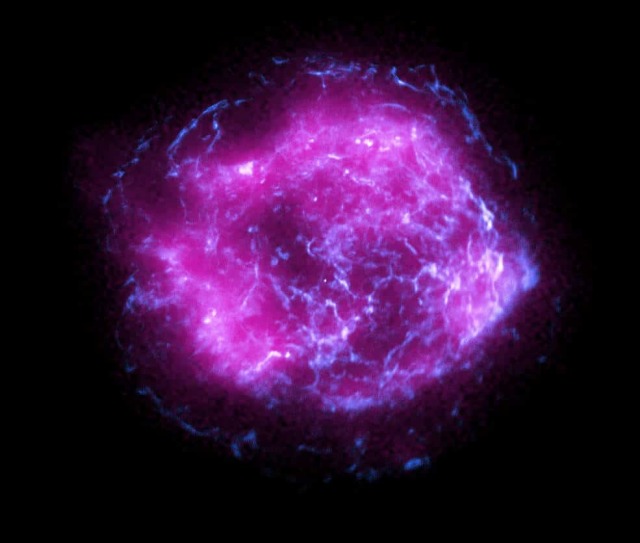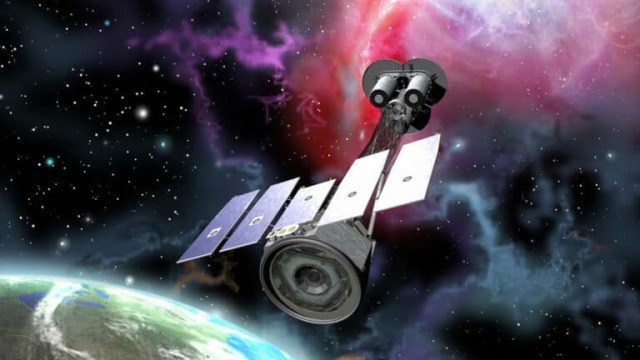The new Imaging X-ray Polarimetry Explorer (IXPE) observatory has transmitted the first data to Earth. The process of its commissioning took a month.
By Valentine's Day, the IXPE research apparatus provided the first scientific image. According to NASA, all Imaging X-ray Polarimetry Explorer tools are working normally.
The device focused its X-ray "vision" on Cassiopeia A, a supernova remnant in the constellation Cassiopeia. It is the brightest radio source in the sky at frequencies above one gigahertz outside of our system and one of the first open discrete radio sources.

This image of Cassiopeia A combines some of the first X-ray data collected by the Imaging X-ray Polarimetry Explorer (shown in magenta) with data from the Chandra X-ray Observatory (shown in blue)
Image source: NASA
The supernova broke out about 11 thousand light-years away from us. According to scientists, the inhabitants of the Earth could have seen its explosion 300 years ago, but no mention of it has been preserved. Perhaps, in the optical range, the supernova radiation was weakened by interstellar dust.
"The IXPE image of Cassiopeia A is beautiful, and we look forward to analyzing the polarimetry data to learn even more about this supernova remnant," NASA quoted Paolo Soffitta, chief Italian researcher for the program at the National Institute of Astrophysics (INAF).

Imaging X-ray Polarimetry Explorer
Image Source: NASA
The IXPE X-ray Observatory was launched on December 9 last year. The mission was announced on January 3, 2017: it was the result of cooperation between NASA and the Italian Space Agency. The cost of the mission is estimated at more than $ 180 million (the price of the launch itself is $ 50.3 million).
The purpose of IXPE is to expand our understanding of astrophysical processes. Among other things, the observatory will study quasars, pulsars and black holes.
Imaging X-ray Polarimetry Explorer is a relatively small device with a starting mass of 330 kilograms. He received three identical telescopes. The operations of the device are managed by Ball Aerospace.
Recall that on December 25, the long-awaited launch of the James Webb space telescope took place . He recently completed the initial tests of his hardware and software and began calibrating the systems before the main work cycle. Presumably, this will take several months. The most important stage will be the "alignment" of the mirror.
The researchers hope that the telescope will allow them to learn the main secrets of the universe by looking into its very depths. The equipment will allow James Webb to detect the light of the first stars and galaxies that formed after the Big Bang, find new exoplanets and much more.
